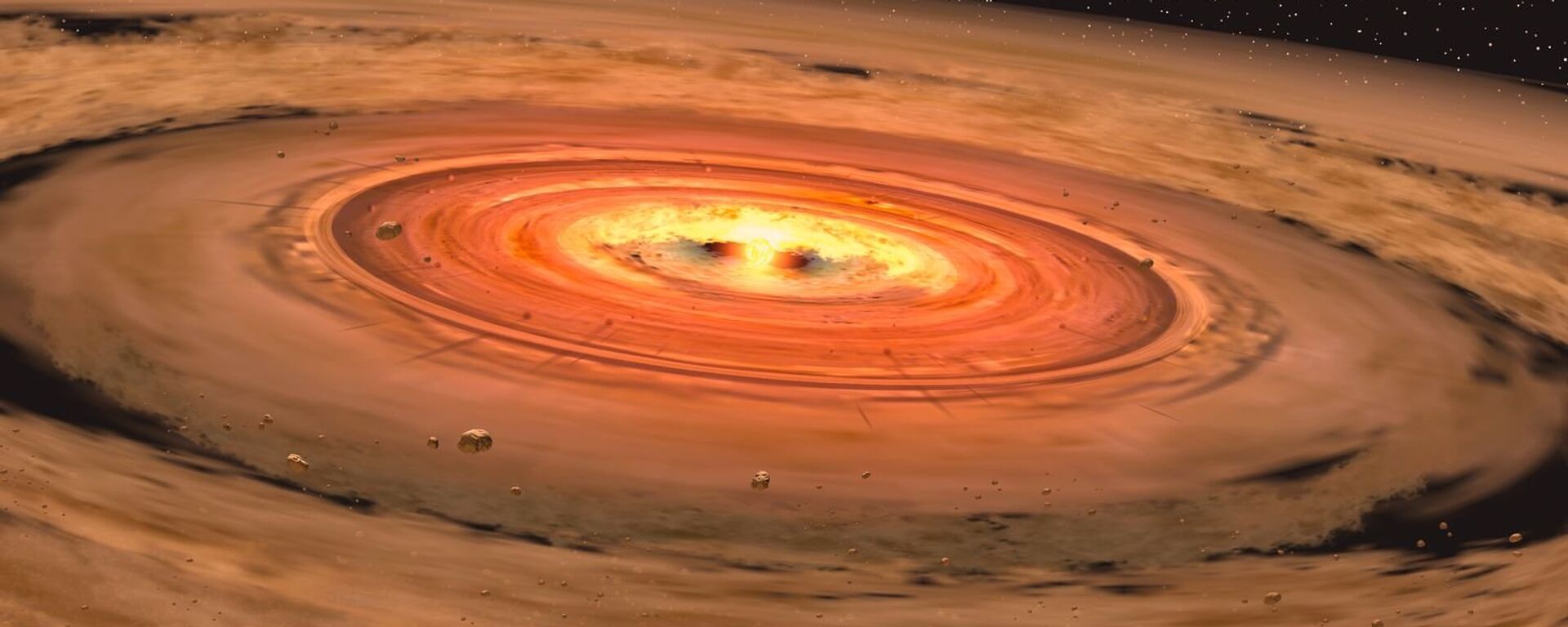Hubble Spots ‘Toddler’ Red Dwarf Star Blasting Away Planet’s Atmosphere in ‘Tantrum’
Subscribe
An unfortunate planet 32 light-years away is being pummeled with radiation by its host star, a red dwarf that’s smaller than our sun but far more unstable.
The incredible episode was spotted in imagery by the Hubble Space Telescope and published by the discovering scientists in The Astronomical Journal last week.
AU Microscopii (AU Mic) is a temperamental stellar object. The tiny red dwarf is just 9% as bright as the sun and is located 31.7 light-years away. It is a variable star, meaning its brightness changes markedly with time due to huge flaring events. It’s also extremely young, just 23 million years old. When it formed, the dinosaurs on Earth had been dead for 42 million years already.
Because of its youth, AU Mic still has a protoplanetary dust ring surrounding it, although astronomers have singled out three planets.
The largest and closest to the star is a Neptune-sized planet known as AU Mic b, which orbits just 6 million miles away from AU Mic - that’s just one-seventh the distance at which Mercury, the closest planet to our sun, orbits the sun.
At such a close distance, the planet is extremely vulnerable to its host star’s flaring events. As the scientists found, those bursts of radiation are so violent they seem to be literally stripping away AU Mic b’s atmosphere.
Keighley Rockliffe, an exoplanet researcher at Dartmouth College and the principal author of the study, said that AU Mic is “very, very young, basically a toddler star," and is behaving accordingly.
"Stellar astronomers are excited because AU Mic is an example of what the young, tantrum-like years of a red dwarf - the most common type of star in the Milky Way - are like,” she said.
They figured out what was happening by watching the planet transit its host star, meaning it passed directly in front of it from the perspective of a viewer on Earth. Rather than crossing in front of AU Mic in an organized and predictable format, the astronomers found the planet was starting its transit early, dimming the star earlier than expected and in a bizarre and inconsistent way.
There could only be one explanation for this extra matter in AU Mic b’s orbit: it must have escaped from the planet - or been blown away.
Rockliffe explained that while atmospheric escape isn’t exactly new or novel, that doesn’t mean their study of it happening on a planet so close to Earth isn’t useful - in fact, far from it.
"AU Mic b is special because it is not special at all!" she said. "It is an example of the young stage of the most typical exoplanet-star system in the galaxy, and therefore gives us important insight into what atmospheric escape looks like at this very critical and very common formative period of an exoplanetary system."
The cause of the atmospheric loss was deduced by the star’s erratic behavior, but not exactly confirmed as of yet.
"My opinion, or intuition, is telling me this behavior is intricately tied to the atmosphere's interaction with AU Mic's stellar winds," Rockliffe said. "AU Mic's stellar winds might be causing turbulence as it interacts with the atmosphere, causing this time-variable burping of hydrogen gas."
Another possibility Rockliffe mentioned is that the atmosphere is being lost due to an internal planetary process, such as instabilities in the newly formed planet’s core.
The temperamental nature of red dwarfs, as well as the tendency of their planets to form much closer to the star than is the case in larger celestial bodies, has led astronomers to conclude that life is unlikely to have formed on planets orbiting such stars. However, red dwarfs are the most prolific type of star in the galaxy.



